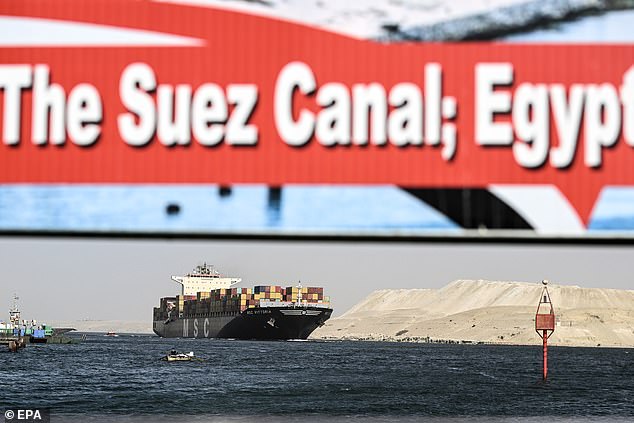Moses’ parting of the Red Sea may NOT have been a miracle and could have been because of a ‘meteorological phenomena’, study suggests
- Biblical miracle when Moses parted the Red Sea can be explained by science
Moses parting the Red Sea to allow the Israelites to escape from the Egyptians may not have been a miracle after all, a new study suggests.
The parting of the Red Sea appears in the book of Exodus in the Old Testament of the Bible.
It is the moment when Moses performs the miracle to allow the Israelites to escape from Pharaoh's men who were pursuing them.
But according to the University of Leicester's School of Biological Sciences, there were four natural events that could explain the drying of the area.
The parting of the Red Sea appears in the book of Exodus in the Old Testament of the Bible

The team from the University of Leicester believes the breakup of the sea could have really happened. Pictured: A scene from the Old Testament of Moses and the Israelites fleeing Egypt
Students Rebekah Garratt and Rikesh Kunverji argue that negative waves, easterly winds, tidal waves and Rossby waves may have caused a resurgence of water large enough to allow people to cross the sea on foot.
They wrote in the Journal of Interdisciplinary Topics: 'Research into the methods by which the waters may have receded, allowing Moses to cross safely, may depend on having 'perfect' conditions, but they are still physically feasible events.
'Meteorological phenomena are known to be notoriously unpredictable and can lead to chaotic chains of events that can lead to extreme phenomena, which bystanders may view as the 'parting of the sea'.
“Whether it's a miraculous act of God or the result of some of the unlikely, coincidental phenomena discussed in this article, the chance of 'breaking up' is not zero.”
A phenomenon called 'wind setdown' – where strong and persistent winds can lower water levels in a given area, while causing water to build up downwind – could be the explanation.
The wind speed would have to be “significant” to keep the water separated for long periods of time, the team said.
The phenomenon has been documented and is said to be the opposite of storm surges.

Tidal resonance is believed to have allowed Napoleon and his army to cross the Red Sea in 1789

The Gulf of Suez would be the best location for Moses to cross as it is known for large tidal fluctuations. In the photo, a container ship crosses the Suez Canal towards the Red Sea
However, there is another possibility that stronger than normal spring tides combined with windy conditions could cause the water level to drop so much that it created a drying area that allowed Moses and the Israelites to cross the border.
The Gulf of Suez would be the best location for Moses to cross as it is known for large tidal fluctuations.
The team said: 'Tidal resonance occurs when a sudden, unexpected external input, such as extreme wind, excites one of the resonance modes of a local region of the Red Sea, leading to a much more extreme low tide, exposing larger areas of the ocean to lay down. seabed.'
This is the phenomenon that allowed Napoleon and his army to cross the Red Sea in 1789.
The article also suggests that a natural phenomenon called Rossby Waves may also be the cause.
Rossby waves occur in rotating fluids and appear in oceans due to the rotation of the planet.
The newspaper said: 'They are making the tide higher than normal.
“The waves move enormous amounts of water, meaning that an event in the Red Sea could have displaced large amounts of water, causing the tide to recede an unusually large amount, leaving shallow or no water for the Israelites to walk through.”
The Journal of Interdisciplinary Science Topics is designed to help students understand the writing, peer review, and publishing of scientific articles.
